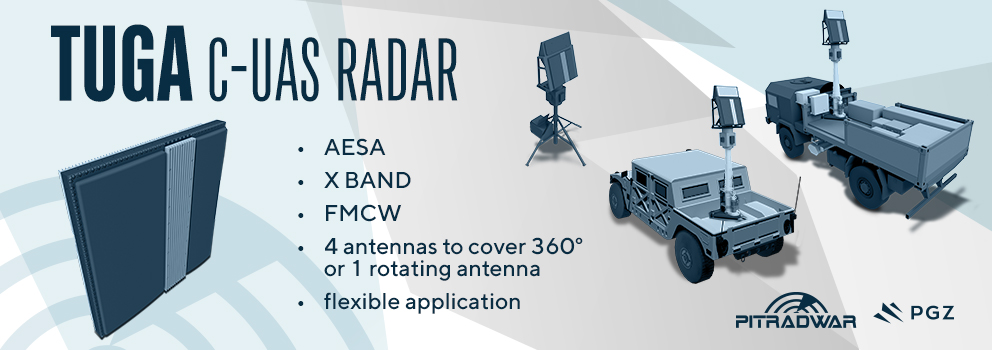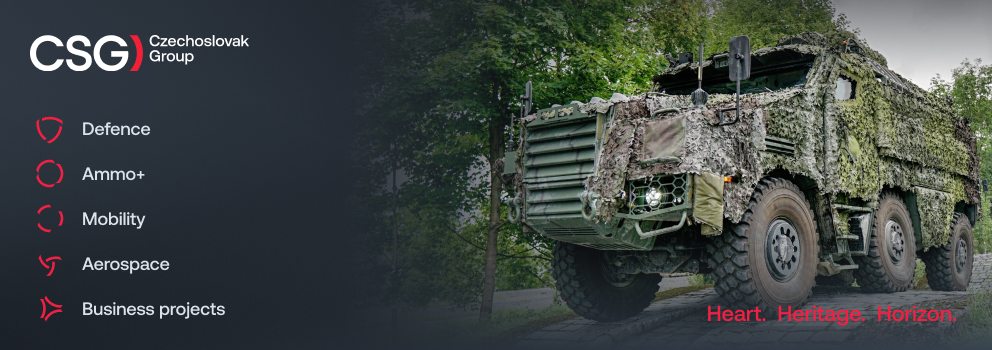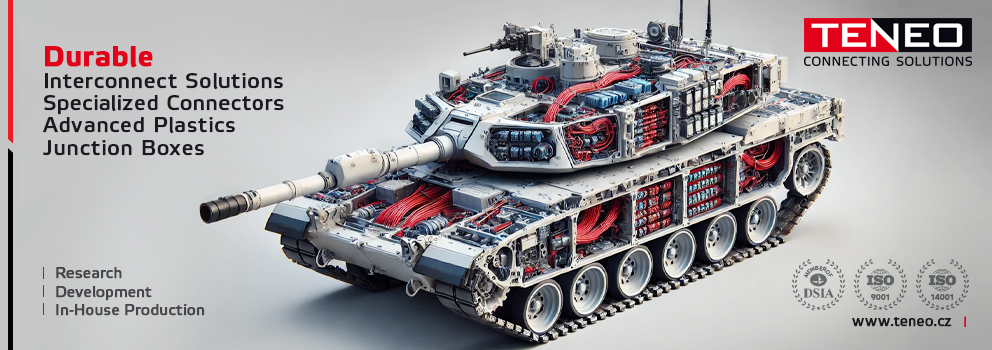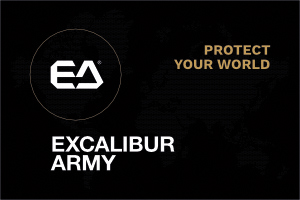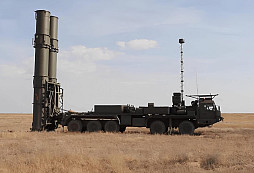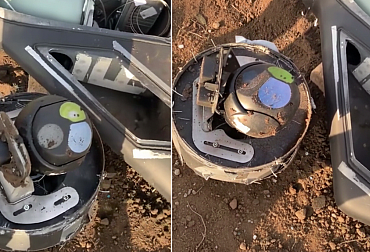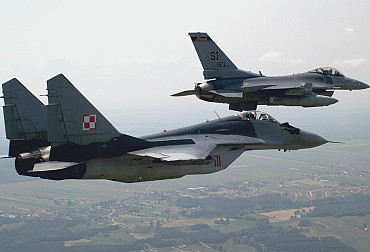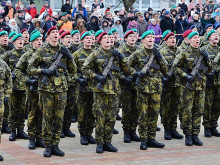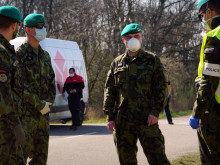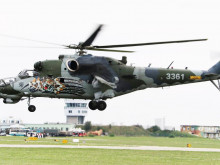Military transport: The backbone of logistics
Military transport plays an absolutely crucial role in the armed forces. It is an invisible force that ensures that soldiers, equipment, and materials get exactly where they need to be, on time and safely. In the Czech Army, this is handled by the Military Transport Department of the Logistics Agency. Although its work is often hidden from public view, its importance for the fulfillment of the Army's tasks is absolutely indispensable. Since the beginning of July, the "transporters" have had a new chief, Colonel Josef Tomšíček, who came from the Logistics Section of the Ministry of Defense of the Czech Republic, and we focused on the topic of military transport with him.
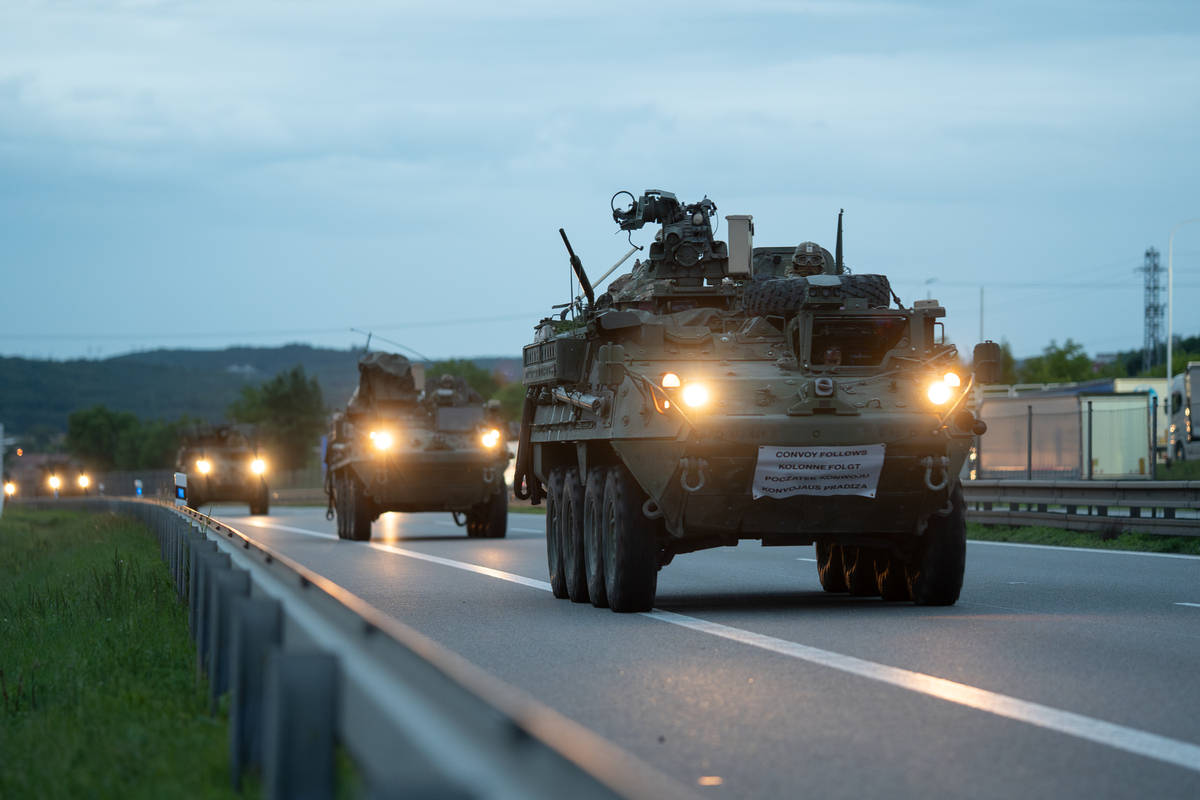
Colonel, military transport is certainly a very broad topic. Could you tell us what your department is responsible for and who it works with?
The department's work is not just about securing the transport of equipment and materials from point A to point B. It is a complex mechanism that involves careful planning, coordination, and implementation of all types of transport. Whether it is land, rail, or air transport, detailed preparation and flawless execution are always necessary.
Essentially, it manages and plans the coordination of military movements and transport of the armed forces of the Czech Republic by all modes of transport within and outside the territory of the Czech Republic, including movements and transport of armed forces of other countries on our territory. It is therefore a unique body in the field of military transport and, in relation to NATO countries, acts as a national transport coordination center. In accordance with the NATO concept, it is also the host country's body for coordination between military and civilian authorities to support and ensure the requirements for military movements and transport of armed forces of other countries, whose entry and stay in the Czech Republic has been approved by the Czech Parliament in the case of stays in our territory longer than 48 hours. To fulfill these tasks, it has established a permanent dispatch service and maintains continuous cooperation with the relevant state and local government authorities of the Czech Republic, as well as with domestic and foreign authorities and organizations that provide transport. It also professionally manages the activities of the Regional Military Transport Centers in Hradec Králové, Olomouc, and Plzeň.
As I have already outlined, cooperation within the army is essential for us, for example with the Operations Command, the Military Police, the Host Nation Support Department, and a number of other departmental entities. However, close inter-ministerial cooperation is also crucial for us. Among our most important partners is the Ministry of Transport, with which we cooperate in the planning and implementation of measures related to the maintenance and development of key transport infrastructure in the Czech Republic that is important for national defense and is used by both the civilian population and the forces and resources of the Ministry of Defense. Furthermore, we deal with possible changes to laws and procedural measures and permits within the framework of the movement of our own and foreign armed forces on our territory. Another equally important interdepartmental partner is the Ministry of Foreign Affairs, which deals with the granting of diplomatic permits for the transit and overflight of foreign armed forces through our territory, as well as diplomatic permits for our armed forces moving through and into the territory of foreign states.
Other counterparts include the Police of the Czech Republic, the Customs Administration of the Czech Republic, and administrative and self-governing units. As is clear from the above, we cooperate with a number of state administration bodies.
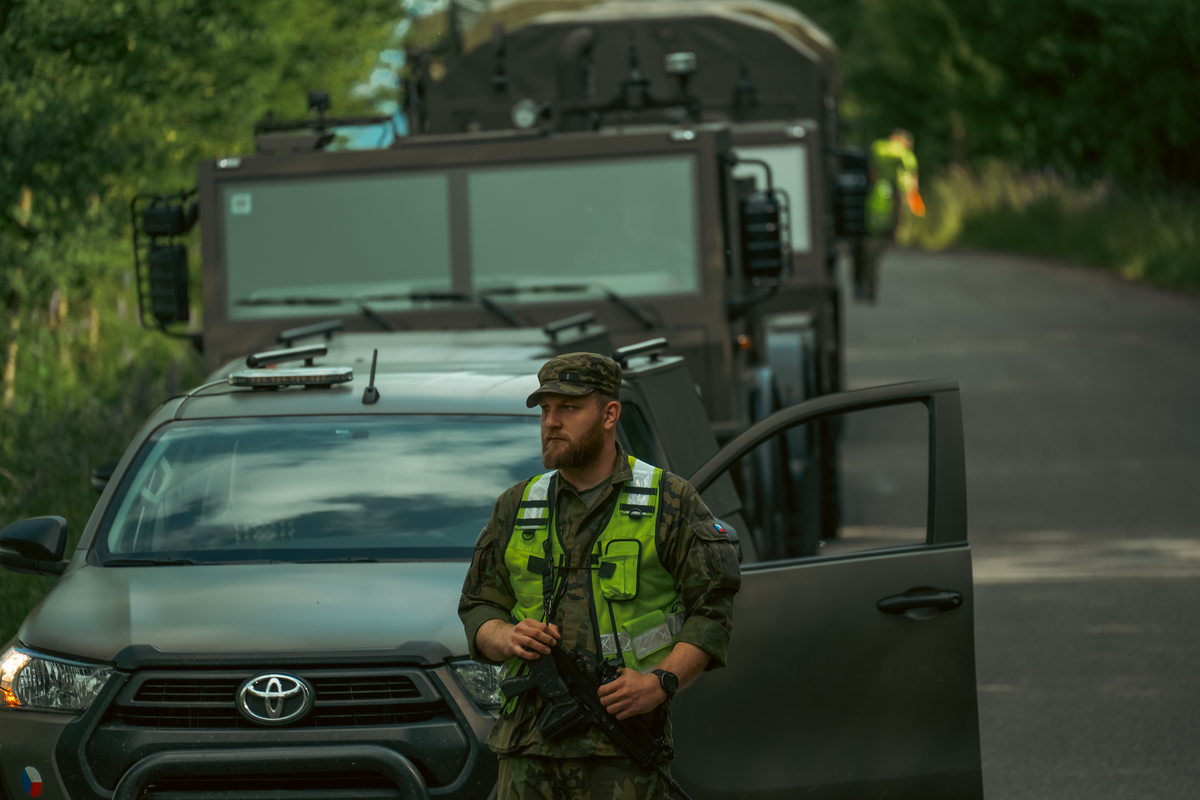
At the beginning, you mentioned the dispatch service. What are its tasks?
One of the pillars of the military transport department is its dispatch service, which operates around the clock. Seven days a week, 24 hours a day, dispatchers monitor military transports and movements and are ready to respond to any unexpected situation. Thanks to communication and information systems, they have a constant overview of the location of transported units and materials, can immediately respond to changes, resolve unexpected complications, and effectively coordinate all participating units.
If military equipment and personnel are being transported to an exercise and a traffic accident occurs, we are among the first to know about it and we inform the Military Police and other authorities with the power to decide on the consequences of traffic accidents or extraordinary events related to the movement and transport of Czech Armed Forces personnel and equipment. Their work ensures that even in the most demanding conditions, the logistics chain will function without hesitation.
Dispatchers often have to deal with unexpected situations and traffic accidents. Can you recall any?
We had an incident involving the transport of soldiers, military equipment, and technology by rail, when a locomotive collided with a civilian van at a railroad crossing in Poland. Our expert escort immediately informed the dispatch center, which passed the information on to the Operations Command, the Chief of the Military Transport Department, and other interested parties, including the carrier, who negotiated with the Polish railway operator regarding capacity on the transport route due to a change in the timetable and a new locomotive. Although the transport was delayed, the cargo and passengers arrived safely at their destination.
In June and July, American troops were being moved across our territory. Were there increased demands for military transport at that time?
Yes, and it presented a logistical challenge that required precise planning and cooperation with many partners, including close cooperation with the Host Nation Support Department of the Logistics Agency, which also has a significant influence on the planning process and serves as the main intermediary between the state requiring host nation support and the individual branches of the military. In this regard, military transport personnel participated in route reconnaissance, i.e., detailed surveys of designated roads to ensure that they were safe and passable for the equipment in question. An integral part of these movements is also coordination with the Military Police, which provides escort and security for convoys, thereby minimizing the impact on civilian traffic and ensuring smooth passage.
When foreign units move through our country, several terms are often used, such as columns, convoys, movements, or streams. Is there any difference between them?
Each of these words has its own technical meaning and needs to be explained.
Military movement – represents the systematic relocation of armed forces units, together with their equipment and materials, from one location to another, using their own means of transport and in accordance with the principles of transport security for the armed forces.
Military transport – includes the coordinated movement of armed forces, together with their equipment and materials, using means of transport.
Military rail transport – includes all movement of persons and cargo carried out by rail through carriers. These transports are divided according to geographical scope into domestic and international, and according to type into military transports (most often involving a complete military train), military shipments (transport of several pieces of military equipment), and the transport of empty railway cars for the needs of the carrier.
Military convoy – a group of vehicles moving together under a single command. It is usually accompanied by force protection or escort vehicles. A convoy is usually made up of several streams.
Vehicle stream – a stream of vehicles refers to the joint movement of three or more vehicles under the command of a stream commander along a single axis of movement. When moving a larger number of vehicles, these vehicles are organized into groups, with a maximum of 30 vehicles per stream.
Axis of movement – the route taken by a unit or military formation when moving from one place to another.
Column – a group of vehicles lined up at prescribed distances behind each other, moving along a single road under the command of a single commander at the same time and in the same direction. Unlike a convoy, a column is not as organized.
This is just a small selection of the many other terms we could describe, but this list is probably the most important.

Members of transport security units participated in these movements. What are their main tasks?
Transport security units, or Movement Control Teams (MCTs), are an important part of transport security in military operations, in which soldiers, military equipment, technology, and other supplies are moved from the unloading site to designated areas of operation abroad. Their tasks include, for example, managing the movement of forces and resources at transport hubs, guiding equipment, acting as a military police service, or performing basic engineering work, such as building a so-called UNOR ramp, or universal loading steel ramp, which is used to load military equipment onto railway wagons.
They are composed of specially trained members of the Military Transport Department of the Logistics Agency, the Regional Military Transport Centers in Hradec Králové, Plzeň, and Olomouc, including a unit from the Rakovník Deployable Forces Support Battalion. each MCT member must be equipped with a protective ballistic vest, helmet, and personal weapon. As they move around transport hubs, they must wear reflective markings along with a traffic control kit. They also carry communication equipment, a laptop with navigation, a tent shelter, and engineering tools.
How often do the units train? And do they cooperate with alliance partners?
In addition to foreign deployments, the department regularly focuses on improving its capabilities. A great example is the recent exercise that took place at the Hradiště Military Training Area. More than 30 soldiers from regional military transport centers, the Rakovník battalion, and the Logistics Agency participated in the training. International cooperation was also important, as the exercise was conducted in collaboration with colleagues from Slovakia’s 701st Military Transport Center in Bratislava.
The aim of the training was to practice a wide range of military skills that are key for these specialists. The soldiers improved their small unit tactics, including responding to rapid ambushes and survival basics. Cooperation with the 102nd Reconnaissance Battalion enabled them to practice advanced tactical scenarios and develop the ability to respond quickly to unexpected situations. Emphasis was also placed on medical training, specifically on providing CLS (Combat Lifesaver) first aid.
The training also included special driving skills, such as driving on unpaved roads or rescuing vehicles using a winch and simple pulleys. Equally important was firearms training with both short and long weapons and topography, which is essential for orientation in unfamiliar terrain.
Cooperation with Alliance partners has long been ongoing as part of the NATO MovCon MILU (Movement Control Multinational Integrated Logistic Unit) project. This unit was created to support NATO logistics operations. The group coordinates and controls various transport elements during the deployment, maintenance, and relocation of NATO forces in an international environment. The Czech Republic was the lead country in this project last year and handed over the leadership for this year to the Hungarian Armed Forces, specifically to members of the military transport from the Logistics Support Command.
Are there any new elements in military transport that are not yet so well established?
In recent years, we have begun to focus more and more on the Military Police Service, whose activities we also practiced during a recent training exercise in Doupov. The service itself is defined and regulated by Act No. 361/2000 Coll., on road traffic, specifically in §75. This section clearly defines the powers and duties of the Military Police and Military Police Service in ensuring order and safety, for example, when checking vehicles, identifying persons, or resolving incidents. Training in these tasks is essential so that soldiers are able to act correctly and lawfully in situations that require quick and decisive action in real-life situations, especially during the aforementioned movements of foreign forces, which can cause traffic complications.
And what is the future of military transport, what challenges await it?
The Military Transport Department of the Logistics Agency is a specialized unit of the ministry that is constantly evolving and adapting to new challenges. Its ability to provide efficient and safe transport, both nationally and internationally, is essential for the operations of the Czech Armed Forces.
Efforts are also being made to meet NATO and EU requirements in relation to the deployment of forces and resources to operations in the shortest possible time, while ensuring the rapid and smooth movement and transport of foreign armed forces through our territory. To this end, the department must cooperate with the Logistics Section of the Ministry of Defense on procedural measures within the framework of legislation to optimize and accelerate the processing and issuance of a range of permits for the transport of oversized and heavy equipment, for the benefit of our own and foreign armed forces, including diplomatic permits. Another challenge is the maintenance and development of transport infrastructure within the Czech Republic, as I mentioned earlier in the context of cooperation with the Ministry of Transport.
A very important challenge is recruiting transport specialists. Military transport specialists are trained at the University of Defence in Brno, at the Faculty of Military Leadership, in the Armed Forces Management and Employment study program where they can specialize in military transport. Here, students acquire professional knowledge and skills, both through theoretical preparation and practical training, demonstrations at civilian and military entities involved in transport, logistics, and supply, and, of course, through internships at selected units of the Czech Army.

During their studies, students focus on key areas such as planning, organizing, and managing military transport, gaining knowledge in the field of transport infrastructure, which is crucial for the economy, population mobility, and ensuring the country's security. They also learn about the transport technologies currently used, which are essential for transport, as well as land, air, and sea transport. After completing their studies, students are able to optimize transport processes in crisis situations, where transport is a key element and it is necessary to coordinate all related activities. After completing the five-year program, graduates of the Military Transport specialization are experts in transport security and the management of transport operations in an army environment.
